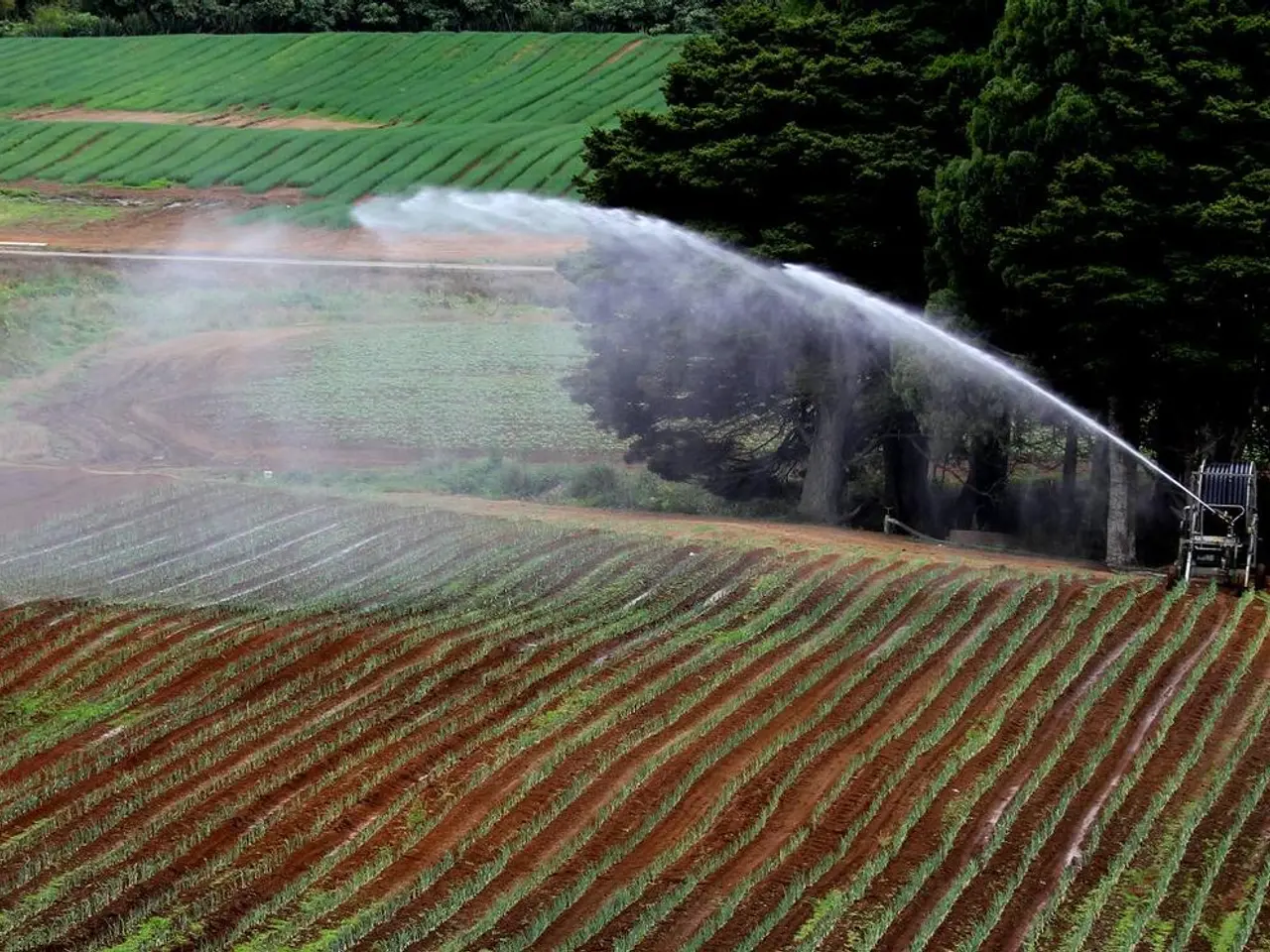Leveraging Agricultural Advantages and Challenges for Optimal Results
==============================================================================
In the world of agriculture, identifying and managing strengths and weaknesses is crucial for improved productivity and informed decision-making. One effective method to achieve this is by conducting a SWOT analysis (Strengths, Weaknesses, Opportunities, and Threats). This structured approach systematically evaluates internal and external factors affecting a farm or agricultural enterprise.
To begin, it's essential to identify strengths. These could include high productivity, access to quality inputs like seeds and fertilizers, cost efficiency, and the availability of technology. For instance, in rice farming, strengths might be high yields and low input costs.
On the other hand, weaknesses should also be recognised. These internal limitations might include labour intensity, high resource requirements (land, water), vulnerability to pests and diseases, or lack of mechanisation.
To gain a comprehensive understanding of these factors, collect data and benchmark your farm's performance against industry standards or similar farms. This comparison highlights areas where your operation excels or lags behind, thereby identifying relative strengths and weaknesses and uncovering potential gaps to address.
Involve stakeholders such as farm managers, workers, and experts in assessing operational inefficiencies, resource constraints, or market challenges. Their insights provide a holistic view of the farm's operations.
Once the SWOT analysis is complete, analyse and prioritise the results. Use them to prioritise management decisions—capitalise on strengths, mitigate weaknesses, pursue opportunities, and defend against threats.
Setting clear goals is also crucial. Define specific, measurable, achievable, relevant, and time-bound (SMART) goals aligned with the farm's mission and vision to guide improvements based on SWOT findings.
Implement targeted interventions for weaknesses like disease susceptibility or labour shortages. For example, adopt integrated pest management, mechanisation, or training. Leverage strengths like quality seed varieties to expand production or enter new markets.
Regularly monitor and review the farm's performance to assess the impact of management changes and update the SWOT analysis as conditions evolve.
Moreover, being detail-oriented during planting can lead to better crop health and easier harvesting. Delegate tasks based on who is best suited for them—for instance, your kids can help with tasks like watering plants or collecting eggs, while your partner manages livestock care and daily operations.
For those seeking to learn more about soil health, agricultural workshops and online courses are available on our website. Large projects like building a greenhouse can be broken into smaller, weekly goals to ensure manageable progress.
In conclusion, the SWOT framework is a practical, adaptable tool to systematically identify and manage strengths and weaknesses in agriculture. Regular benchmarking and goal-setting based on SWOT findings further improve the farm's strategic planning and operational efficiency.
- To enhance overall lifestyle and home-garden productivity, implement targeted interventions for weaknesses, such as employing an efficient watering system for water management or investing in suitable tools and equipment to optimize the tasks based on the capabilities of family members.
- While nurturing the home-garden, partake in continuous learning by attending agricultural workshops or enrolling in online courses to cultivate a deeper understanding of soil health and gardening techniques. Align your goal-setting for the home-garden with the SMART criteria to facilitate manageable progress on projects, like building a greenhouse.




